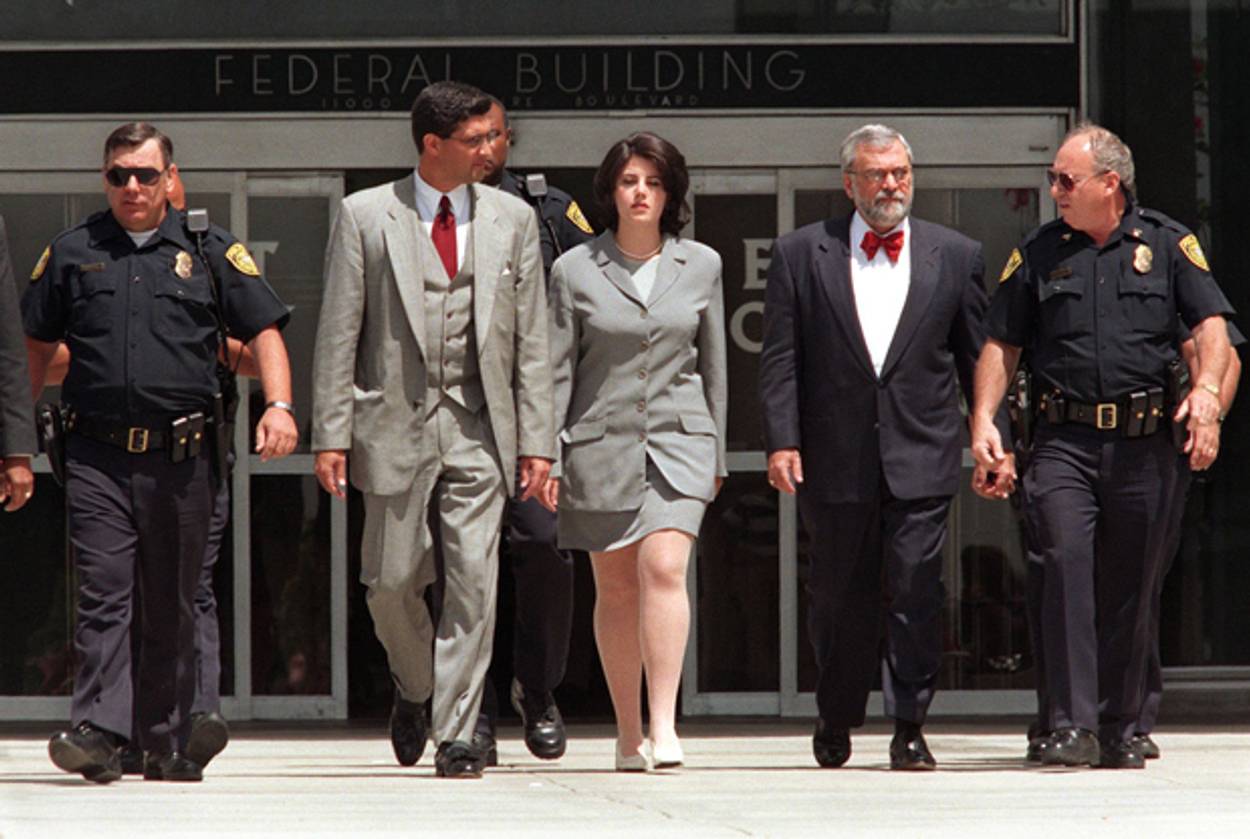A Millennial’s Guide to Monica Lewinsky
A look back at the 1998 scandal that rocked the White House and the country




Hello, friends of the Millennium! This week an infamous story from the late 1990s crept back back into the news (if it ever really left), and for many 20-somethings the details may be a bit fuzzy. Here’s a guide to keep the story straight.
Unlike the show Scandal, this particular scandal involved real people, one of whom was Bill Clinton, president of the United States from 1993 to 2001. The other was a 22-year-old White House intern named Monica Lewinsky, who has written an article about the whole thing in this month’s Vanity Fair.
Lewinsky, a Jewish college student from Los Angeles, got the White House internship through family connections. She started in July of 1995, and by November, she would later admit, she had the first of nine sexual encounters with the president. (Reports that Clinton was less than loyal to wife Hillary Rodham Clinton had been circulating ever since Gennifer Flowers alleged to have had a long affair with then-presidential candidate Clinton during the 1992 primaries.) In December 1995, Lewinsky was promoted to a paid position in the White House Office of Legislative Affairs. She was later moved to the Pentagon, in the lead-up to the president’s 1996 re-election campaign. Their last encounter, according to Lewinsky, occurred in March of 1997.
Lewinsky had told a total of 10 people about the affair—a few friends, a therapist, a relative. She also told Linda Tripp, a friend who worked in the Defense Department, but who was secretly recording their conversations, during which Tripp would encourage Lewinsky to discuss their sexual encounters.
At the same time, Clinton was embroiled in a sexual harassment lawsuit that was filed in 1994 by another woman, Paula Jones, who claimed he had made unwanted advances towards her in 1991. Tripp called Paula Jones’ lawyer and presented him with her recordings of Lewinsky. Lewinsky was subpoenaed in the Jones case. But unlike Jones, Lewinsky had never claimed that her relationship with Clinton was non-consensual, and couldn’t understand why she was being subpoenaed for a sexual harassment case. Rather than expose the president, Lewinsky lied in an affidavit, claiming that she had not had sex with the president.
Tripp, however, wasn’t finished with what she called her “patriotic duty.” Luckily for her, there was a group of people actively looking for evidence of Clinton malfeasance. In 1994, U.S. Attorney General Janet Reno had established an Office of Independent Counsel to look into the Whitewater affair, a failed real-estate venture from the Clintons’ days in Arkansas. Reno had appointed Kenneth Starr as head of the counsel. In January of 1998, the counsel entered its fifth year and had yet to find anything on the Clintons. In other words, they needed something to justify the millions of dollars they had already spent.
Tripp brought the tapes to Starr, who then requested permission to expand his inquiry to find out if the president had asked Lewinsky to lie about the affair. On January 16, 1998, Lewinsky was apprehended by the FBI, and things moved quickly from there. The president was impeached for lying under oath about his relationship with Lewinsky (he was later acquitted).
Lewinsky was eviscerated in the press, a process enabled and encouraged by the Clinton Administration. Her Vanity Fair article is her first public statement on the matter in more than 10 years.
Batya Ungar-Sargon is a freelance writer who lives in New York. Her Twitter feed is @bungarsargon.